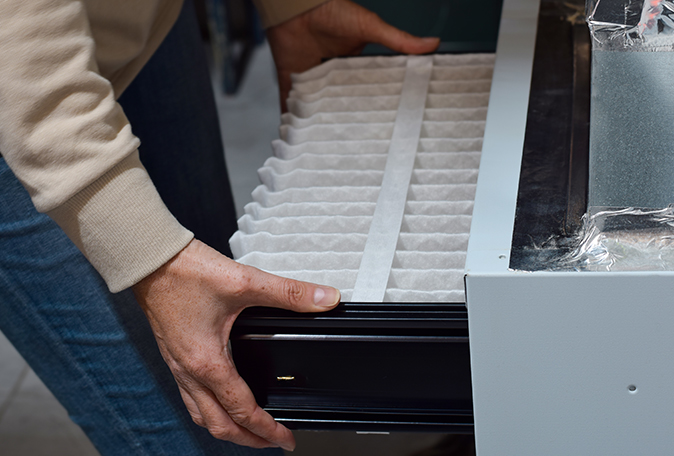Healthier homes boost mental well-being and productivity while reducing illness, energy costs, and environmental impact
Living in a healthy and comfortable home isn’t just about luxury, it’s a necessity that impacts every aspect of our lives. Many of us overlook the direct connection between the design, construction, and maintenance of our living spaces and our physical and mental health. However, creating a healthy, comfortable home is not just a luxury – it’s a necessity for overall well-being.
Incorporating features such as optimal natural lighting, effective insulation, and high-quality ventilation can mitigate risks like respiratory issues, allergies, or fatigue, and significantly boost mood and productivity. Smart designs and sustainable materials can regulate indoor temperatures, reduce energy consumption, and lower carbon footprints, all while providing superior comfort.
Through conscientious decisions about our homes, we are empowered to enhance our lives, improve our health, reduce environmental impact, and contribute to a more sustainable future. You deserve a healthier, happier home – it’s time to make it a reality.

Actions
- Encourage the removal of shoes inside your home
- Install an induction cooktop
- Install hard surface flooring instead of carpet
- Install HEPA or MERV 13 (or higher) filtration
- Test for radon gas, and mitigate if needed
- Test the tap water and install water filtration if needed
- Use low-emitting products and materials
Key Concepts:
1Indoor Air Quality
Indoor air quality is of paramount importance as it directly impacts health. Indoor pollutants, including volatile organic compounds (VOCs), mold, dust, and radon, can cause a variety of health problems ranging from allergies to cancer. You can enhance indoor air quality by ensuring adequate ventilation, using air purifiers, opting for low-VOC paints and materials, and regularly cleaning and maintaining HVAC systems. Indoor pollutants can cause allergies, headaches, and more serious health problems. Proper ventilation, air purifiers, and low-VOC materials can enhance indoor air quality.
Fact: According to the EPA, indoor air can be 2-5 times more polluted than outdoor air.
2Thermal Comfort
A well-insulated and appropriately heated and cooled home is essential for comfort and health. Poor insulation can lead to significant energy waste and discomfort during temperature extremes. Consider energy-efficient insulation materials, advanced window technologies, and efficient heating, ventilation, and air conditioning (HVAC) systems. Temperature regulation is key for comfort and energy efficiency. Energy-efficient insulation, advanced window technologies, and efficient HVAC systems can help maintain appropriate indoor temperatures.
Fact: The WHO recommends indoor temperatures of 18°C (64.4°F) to 24°C (75.2°F) for healthy, active adults.

3Natural Light
Exposure to natural light is beneficial for mental well-being and can help regulate sleep patterns. Use of large windows, skylights, and light wells can increase natural light. Also, consider the orientation of your home to maximize daylight exposure. Exposure to natural light is vital for mental health and sleep regulation. Thoughtful design and orientation can maximize natural light.
Fact: A study found that workers in spaces with windows slept an average of 46 minutes more per night.
4Noise Control
Noise pollution can cause stress, disrupt sleep, and negatively impact mental health. Soundproofing your home can be achieved through the use of insulation, double-glazed windows, and proper planning of home layout to separate noisy areas from quiet zones. Soundproofing reduces stress and enhances sleep quality. Insulation, double-glazed windows, and smart home layouts can control noise.
Fact: According to the CDC, long-term exposure to noise above 70 dB can harm human health.

5Humidity Control
High or low humidity levels can affect respiratory health, comfort, and the longevity of your home. Dehumidifiers, humidifiers, and proper ventilation can help manage humidity levels. Controlling humidity levels promotes respiratory health and extends the life of your home. Dehumidifiers, humidifiers, and proper ventilation can help.
Fact: Ideal indoor relative humidity is between 30% and 50%, according to the EPA.
6Water Quality
Access to clean water is vital for overall health. Depending on the local water quality, you may need filtration systems or water treatment solutions. Regular testing and maintenance are necessary for ensuring water quality. Clean water is essential for health. Filtration systems or water treatments can enhance water quality, with regular testing and maintenance.
Fact: The CDC reports that lead-contaminated water can severely affect children’s health.

7Materials
The choice of building materials significantly affects health, comfort, and sustainability. Select materials that are durable, low in VOCs, sustainably sourced, and resistant to mold and pests. Sustainable, low-VOC, and durable materials enhance health and comfort while reducing environmental impact.
Fact: According to a study, using low-VOC products can reduce VOC exposure by up to 50%.
- “Building a Sustainable Home” by Melissa Rappaport Schifman.
8Biophilic Design
Incorporating nature into your home design can enhance well-being. This includes plants, natural light, and natural materials, as well as design principles that mimic natural patterns and structures. Incorporating natural elements into home design enhances well-being. This includes plants, natural light, and natural materials.
Fact: According to a Human Spaces report, offices with natural elements increased employee well-being by 13%.

9Ergonomics
Home design should take into account the physical comfort and functionality of living spaces. This can involve considering the arrangement and height of furniture and fittings, space planning, and ease of movement within the home. Considering physical comfort and functionality in home design enhances livability. This involves space planning, furniture arrangement, and ease of movement.
Fact: According to a study, poor ergonomics can lead to musculoskeletal disorders.
- “Ergonomic Living : How to Create a User-Friendly Home & Office” by Gordon Inkeles, Iris Schencke.
10Energy Efficiency
While it may not seem directly related to health and comfort, energy efficiency contributes to a healthier, more sustainable home by reducing carbon emissions, improving indoor temperature regulation, and reducing energy costs. Energy-efficient homes use appliances and systems rated by Energy Star or similar programs, and incorporate renewable energy sources like solar panels. Energy-efficient homes reduce carbon emissions, improve temperature regulation, and cut energy costs. This includes energy-efficient appliances and renewable energy sources.
Fact: Energy Star-certified appliances can reduce home energy use by 30%, according to the Department of Energy.

- “The New Net Zero: Leading-Edge Design and Construction of Homes and Buildings for a Renewable Energy Future” by Bill Maclay.
Special Considerations for Affordable Housing Projects:
1Indoor Air Quality
Given that lower-income households may spend more time indoors, indoor air quality is paramount. Construction should prioritize adequate ventilation and low-VOC materials, and incorporate mold and pest resistant designs.
2Thermal Comfort
Efficient insulation and heating/cooling systems are essential for both comfort and cost savings. Inexpensive, energy-efficient solutions like weather-stripping, window film, and attic insulation can make a significant difference.
3Natural Light and Noise Control
Designing for maximum natural light can boost mental well-being and reduce electricity costs. Also, soundproofing, especially in densely populated areas, is crucial for mental health and restful sleep.
4Water Quality and Conservation
Clean water is vital. Affordable filtration systems and regular water testing should be priorities. Water conservation features, like low-flow fixtures and efficient appliances, can also lower utility bills.
5Community Spaces
When possible, shared green spaces and communal areas should be included in affordable housing projects. These spaces encourage social interactions, physical activity, and provide exposure to nature, all of which are beneficial for overall well-being.
Incorporating these considerations in affordable housing projects addresses immediate health and comfort needs, reduces long-term living costs, and contributes to a more sustainable and equitable future. This approach supports the principle that every individual, regardless of income, deserves a healthy and comfortable living environment.









